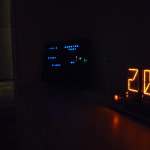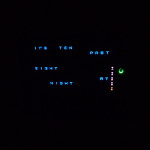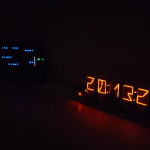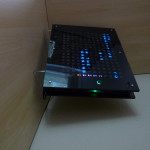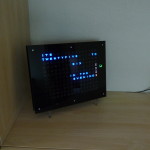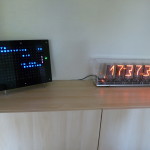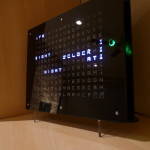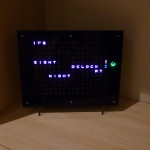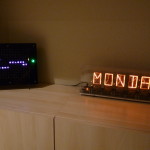Hello! My last blog was about updating the ClockTHREE Jr. software, however, today I will be writing about the process of uploading the code all the way from the Arduino IDE to the master GitHub repository. Once I got the hang of it, the process was as easy as printing “Hello World” with Python.
- First, I downloaded Git on my Ubuntu Linux computer using the command “sudo apt get update” and then “sudo apt-get install git.” However, you can also just install it from the URL listed here: https://git-scm.com/downloads
- The, I logged into my own GitHub account and opened up the Wyloum repository. From there, I clicked the ClockTHREE Jr. tab.
- Once there, I forked the repository by pressing the (Well what do you know?) “Fork” button in the top right corner. This created a branch of the master Wyolum ClockTHREEJr repository in my own account. I did this so I can freely modify the code without affecting the master repository.

4. After clicking the Fork button, I went back to my personal account and I had the forked repository as rohanius/ClockTHREEjr. Next I cloned this repository to my hard drive. I did this by copying the git link by pressing the green button labeled “Clone or Download” (Make sure that when you push the button, the words “Clone with HTTPS” appear, not “Clone with SSH”).

5. I then opened a terminal and made sure that it was currently pointing to my “projects” folder (make sure next to the original line it says /projects). After that, type in “git clone https://github.com/rohanius/ClockTHREEjr.git”. This cloned the repository to my hard drive and created a folder in my “projects” folder and named it the same name as the repository – ClockTHREEjr

6. I was then able to edit the code as I pleased in my local repository.
7. After accordingly editing the code (which I explained in my previous blog), After compiling and testing that my code changes worked, I opened the terminal once again and changed the current directory to be /home/rohan/projects/ClockTHREEjr
8. In that directory, I typed “git commit -a -m “Updated code for Arduino 1.6.9”. This command committed all my local changes to the local git repository that I had cloned.

“-a” means “all the files in that directory that have been modified” and “-m” just allowed me to type a small message once I committed the code.
9. After committing the code, I simply pushed it to my GitHub repository using the command “git push”

10. Finally, I went back to my GitHub repository (rohanius/ClockTHREEJr.) and clicked the pull request tab. From there, I made a new pull request for the original owner of the ClockTHREE Jr. repository. Mr. Shaw was then able to pull all my changed and merge them to the master ClockTHREE Jr. repository.











